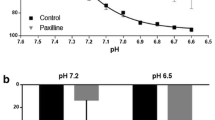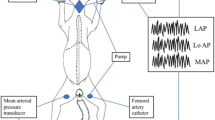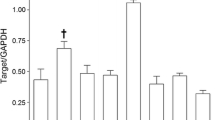Abstract
A rat Langendorff heart preparation, perfused at constant pressure, was used to evaluate the role of KATP channels in respiratory acidosis-induced coronary hyperemia. Prior administration of glibenclamide, an inhibitor of KATP channels, reduced basal flow rates and eliminated the hyperemia associated with hypercapnia. These results implicate KATP channels as a functional link in the respiratory acidosis-induced increase in coronary flow.
Similar content being viewed by others
Author information
Authors and Affiliations
Additional information
Received: 28 June 1999, Returned for revision: 11 August 1999, Revision received: 28 August 1999, Accepted: 29 September 1999
Rights and permissions
About this article
Cite this article
Phillis, J., Song, D. & O'Regan, M. Mechanisms involved in coronary artery dilatation during respiratory acidosis in the isolated perfused rat heart. Basic Res Cardiol 95, 93–97 (2000). https://doi.org/10.1007/s003950050169
Issue Date:
DOI: https://doi.org/10.1007/s003950050169




